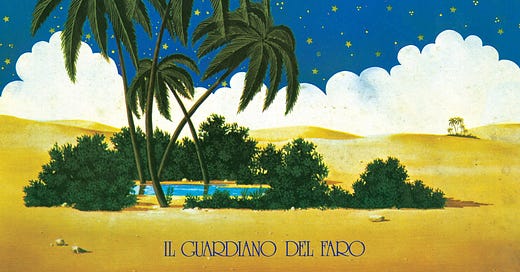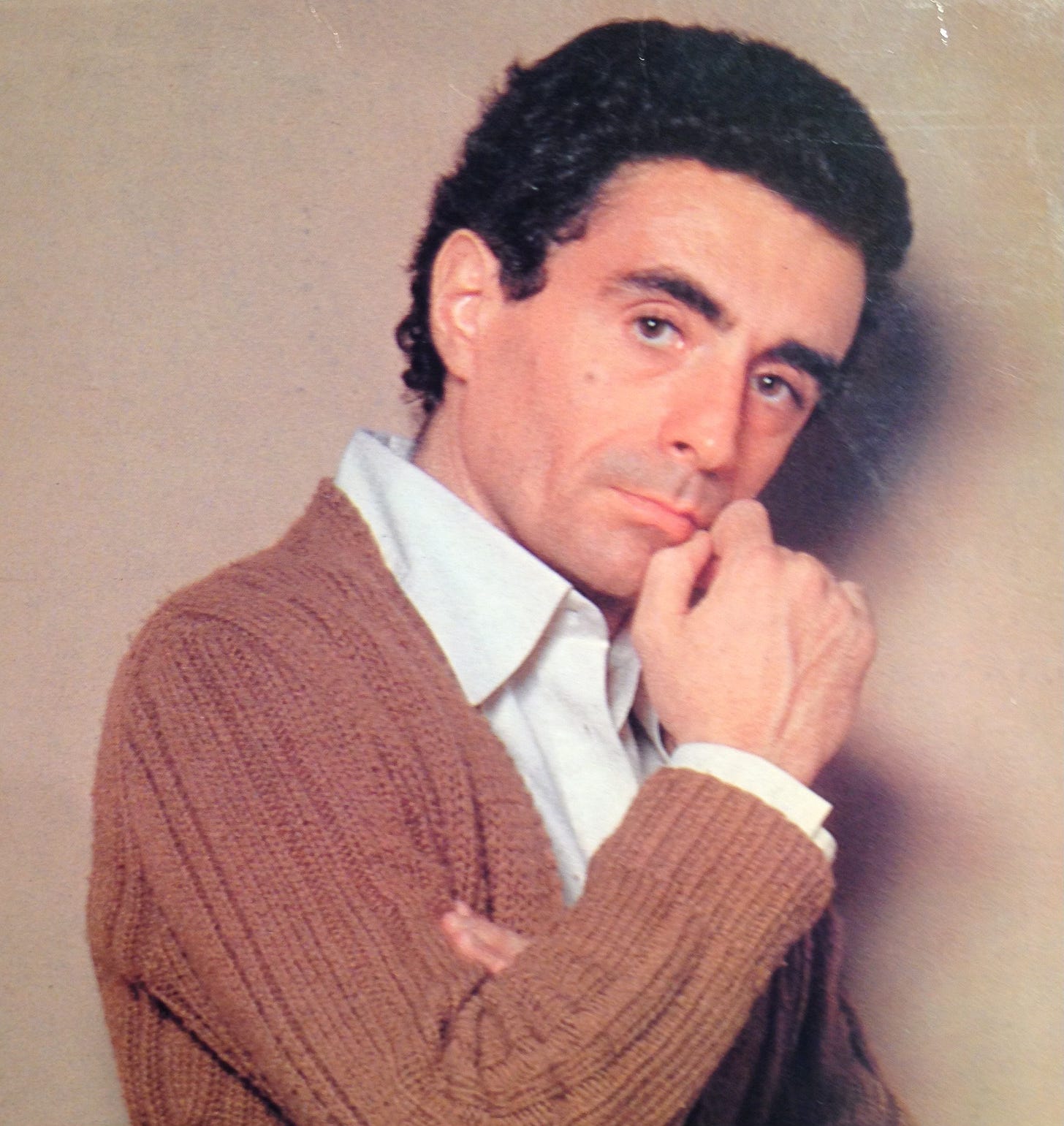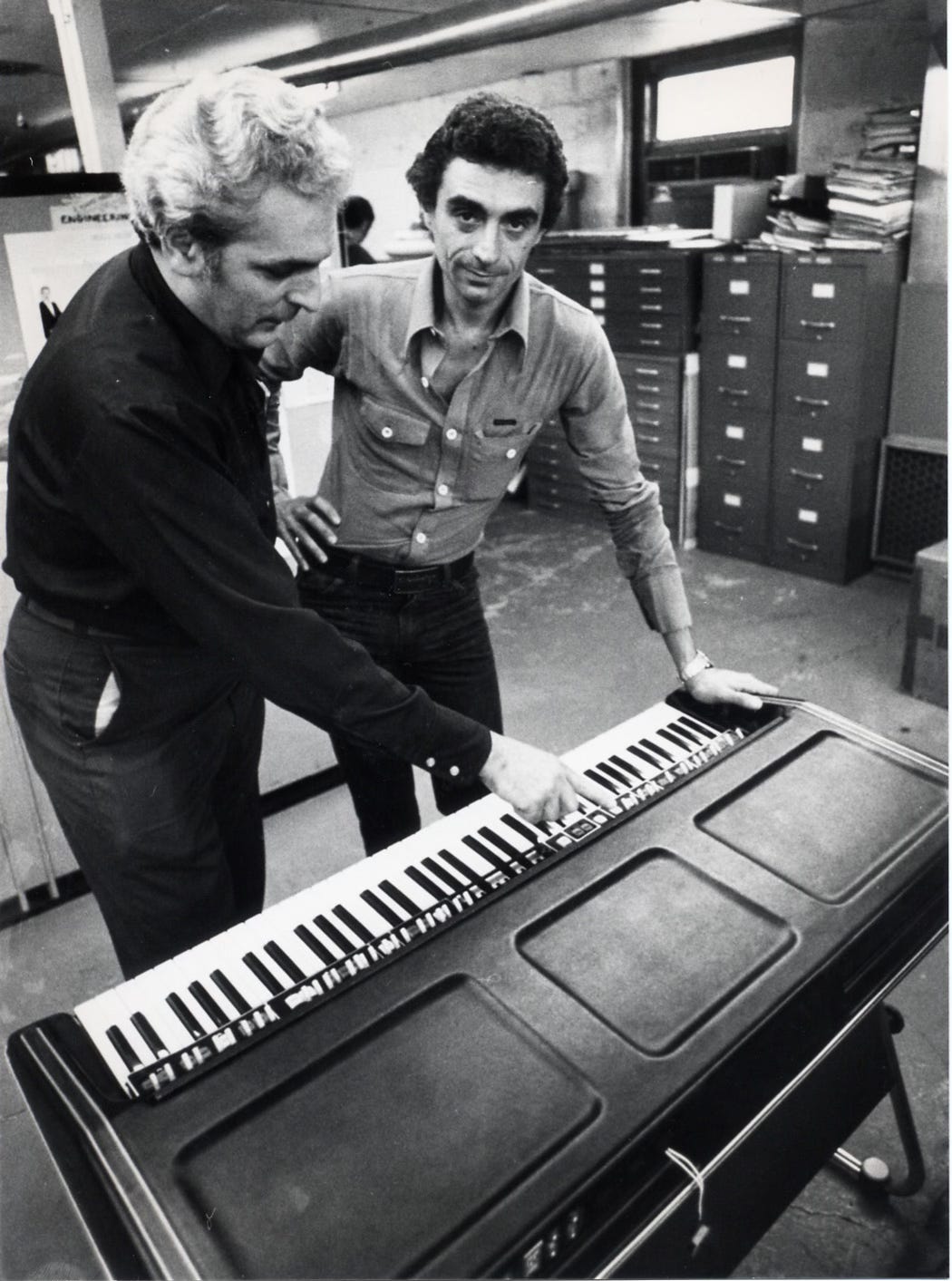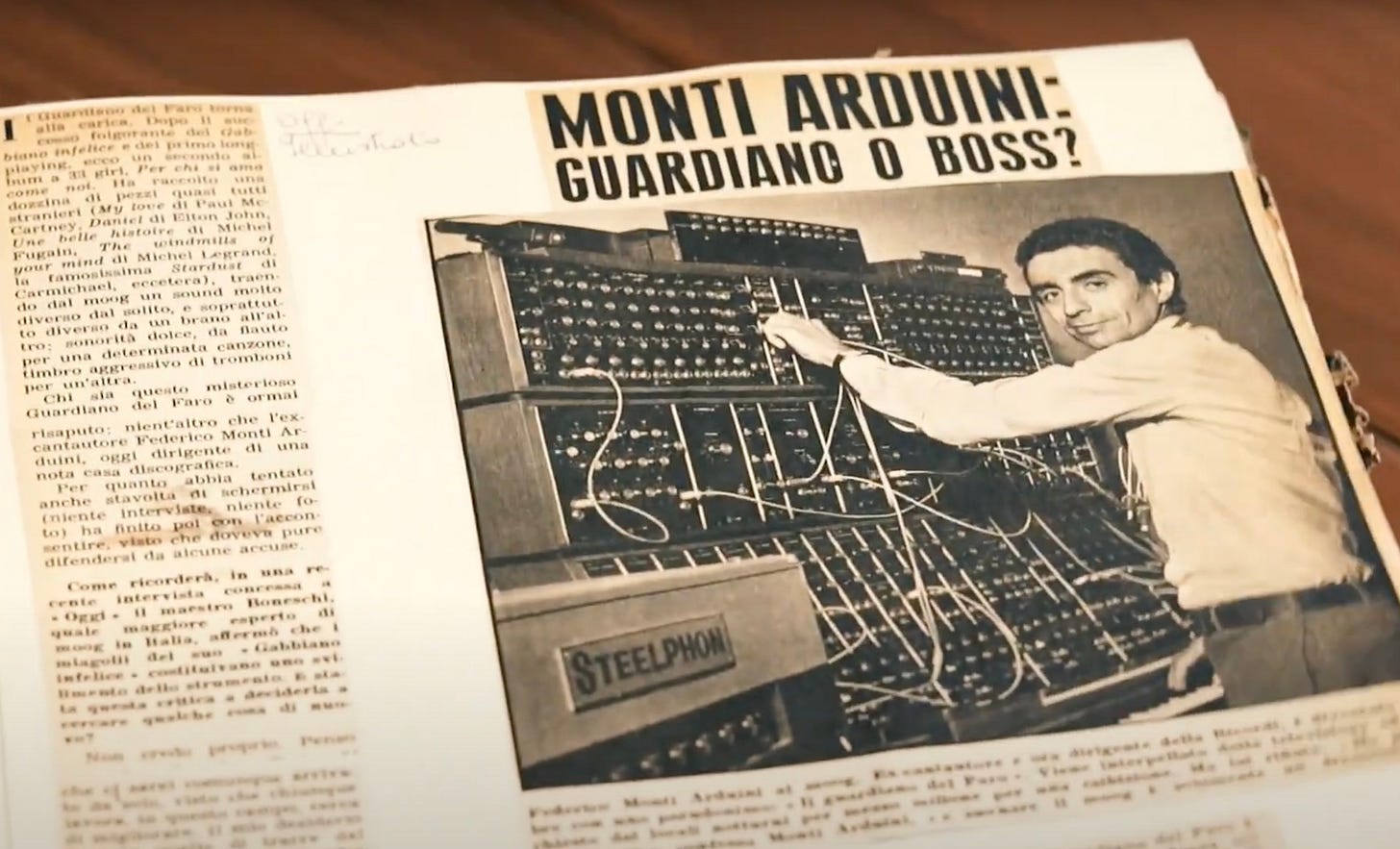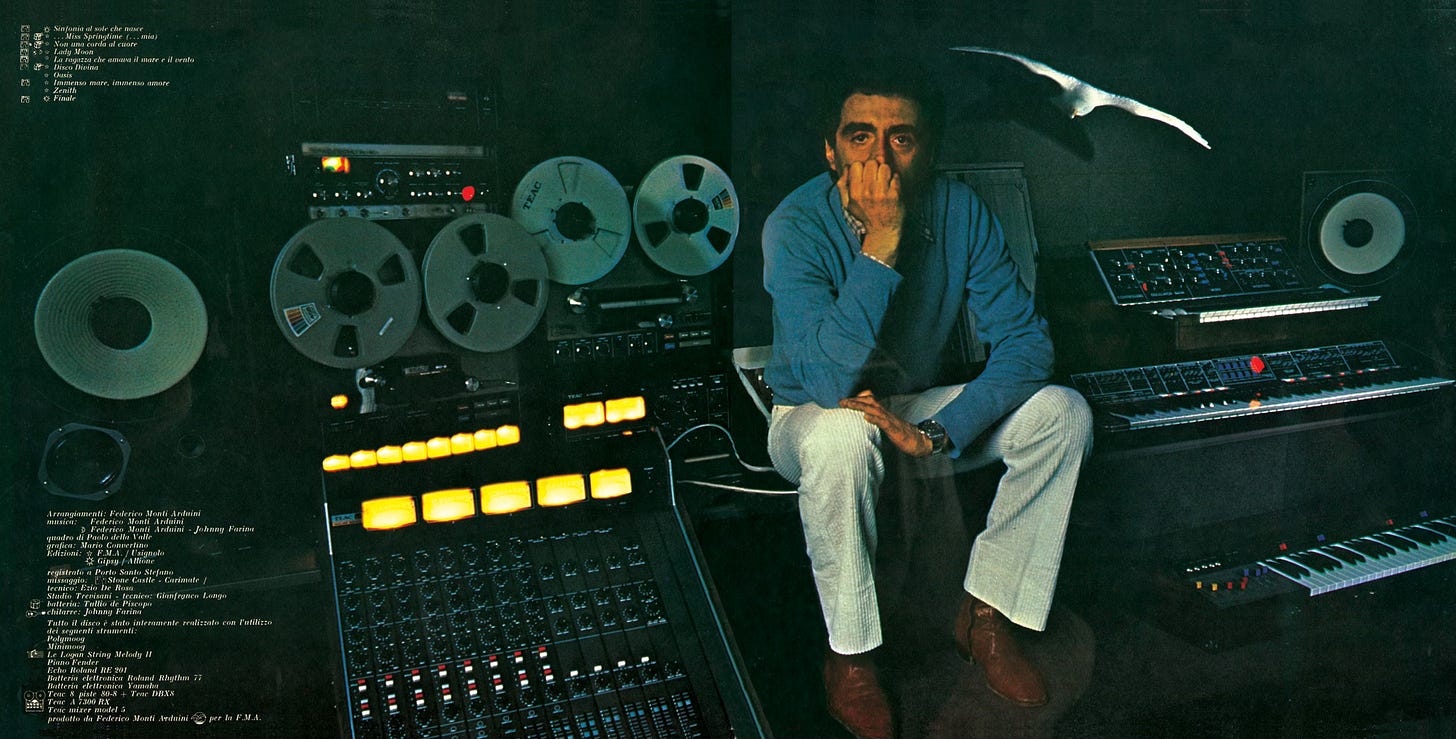Voltage and Waves: The Story of Oasis
In 1978, a Moog, a cliffside studio, and one man’s vision sent a quietly revolutionary signal from Italy — Balearic before Ibiza found its BPM, rediscovered decades later by Café del Mar.
In 1978, as disco fever gripped the planet and electronic music began its slow crawl from the margins, a gentle beacon shone from the Tyrrhenian coast. Oasis, composed and recorded by Federico Monti Arduini under the pseudonym Il Guardiano Del Faro (“The Lighthouse Keeper”), wasn’t looking for a dancefloor. It was signaling from the shoreline: an escape, a mirage, a deeply personal form of electronic meditation that still feels ahead of its time.
Born in Milan in 1940, Arduini was a piano prodigy performing Mozart by eight and writing chart hits by his twenties. He composed for everyone from Mina to Cliff Richard, but mainstream success left him restless.
Then came a turning point. One day in the early ’70s, a Moog synthesizer arrived at the studio for someone else to try. Arduini sat down, began improvising, and couldn’t stop. Enchanted by its expressive power, he asked the studio engineer to record the session. A few days later, that engineer played the tape to the head of the label. The response: They want to release it. Arduini, working then as the label’s publishing director, panicked. “Don’t tell them it’s me!”
When asked for a name, he said simply: Il Guardiano del Faro. The alias, inspired by a childhood lighthouse near his family’s coastal home, debuted with Il Gabbiano Infelice, a Moog-led instrumental adaptation of “Amazing Grace.” The record sold over 700,000 copies and shot to number one on the Italian national chart. In a country still musically rooted in lush ballads and orchestral pop, Arduini had just introduced the Moog synthesizer to the mainstream—and they embraced it.
“Who is this lighthouse keeper?” asked TV anchors and newspaper columns. No one had heard anything like it.
That family home, high on a cliff above the sea in Porto Santo Stefano, would become Arduini’s studio. “My parents’ house had an incredible view,” he said. “I could see all the islands: Giglio, Montecristo, Giannutri…”
There, surrounded by tape machines and silence, he composed Oasis. “In solitude and contemplation,” he recalled. “And the result was the best record I have ever done.”
The title track captures this shift from success to self-searching: modal, serpentine, driven by the dry, hypnotic pulse of a Roland TR-77 drum machine. “Oasis is a mix of oriental flavours,” Arduini says in our short film. “It makes you feel like you’re diving into another country.” There’s a sense of interior travel—electronic but earthy, unplaceable in time or geography.
That same TR-77 anchors much of the album. On “Disco Divina,” it underpins soft-edged Moog lines with a proto-house groove that still works on a modern dancefloor. The track caught a second life when it was reissued in 2018 and, two years later, selected for Café del Mar’s 40th anniversary compilation in 2020. It’s Balearic before Ibiza found its BPM. Ambient before Eno coined the term. New Age without the cheese.
Elsewhere, Oasis offers quiet scenes of ambient beauty: nylon-string guitars, decaying piano, and soft pads that seem to glow rather than sound. “Spiritual synth sounds cover the album in a dreamy haze,” as one listener described it, “oscillating between ambient and psychedelic.” It’s a carefully constructed world, and Arduini’s emotional clarity runs through every piece.
“I had an irrepressible desire to make people understand that, inside, they are vulnerable and emotional but stubbornly alive,” he said. Oasis carries that message without ever preaching. It’s honest, subtle, and deeply felt—the work of a man alone in a room, watching the sea, translating the rhythm of the waves into voltage and melody.
(Interviewed & shot by Silvia Gin)
Time Capsule was proud to inaugurate its reissue series with Oasis back 2018. Curated by Ryota OPP (Meda Fury) alongside label founder Kay Suzuki, this edition was remastered from the original master tapes, lovingly recovered and restored by Tony Cousins at Metropolis Studios, London.
From national stardom to seaside solitude, Oasis marked a new chapter for Arduini. Decades later, its signal still reaches us—clear, warm, and quietly luminous.
Become a paid subscriber to unlock this month’s Bandcamp discount code 👇
Keep reading with a 7-day free trial
Subscribe to Time Capsule to keep reading this post and get 7 days of free access to the full post archives.

